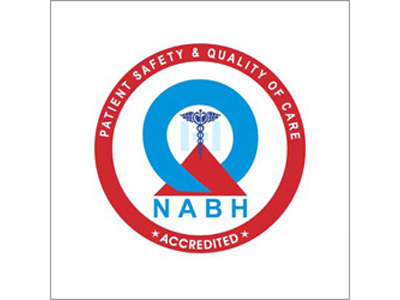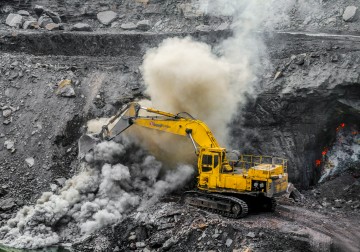In a new study from LVPEI, Dr. Smruti Rekha Priyadarshini and others evaluate the impact of mining dust on the ocular surface health of miners and people living in mining communities.
The surface of the eye is moist and lubricated by a thin layer of tears: the tear film. This lubrication keeps the ocular surface smooth for clear vision, washes away environmental irritants like dust, and prevents friction from the opening and closing of the eyelids. Disruption of this tear film or insufficient tear production manifests as chronic redness, swelling, burning, itchiness, and pain in the eyes—known as dry eye disease (DED). Among other factors, frequent exposure to air pollutants like dust, smoke, and gaseous chemicals can cause inflammation and disturb the tear film, causing DED.
People living in heavily polluted environments, such as industrial zones, near chemical factories, and in mining areas, are at a higher risk of DED. Mining, in particular, introduces massive amounts of dust into the air. Miners and anyone living close to a mining site are exposed to this air, putting them at risk of DED among a long list of other disorders. While the association between air pollution and ocular surface disease is known, the ocular hazards associated with mining are little studied, and the effects of mining dust on the tear film remain unclear.
In a new study published in the journal Clinical Ophthalmology, Dr. Smruti Rekha Priyadarshini and the public health team from LVPEI evaluated the impact of mining dust on the ocular surface health of miners and people living in mining communities. The prospective, one-year study included 376 adult participants, categorized into three groups based on the duration of dust exposure. Group A, or the severely exposed group, included miners who were exposed to dusty air for more than 8 hours a day. The moderately exposed group (group B) comprised resident non-miners who were exposed to dust for 2-8 hours a day. Finally, the minimally exposed group (group C; less than 2 hours) were residents who spent most of their time indoors, such as homemakers and the elderly. The researchers used a series of assessments, such as ocular surface disease index (OSDI) scoring, to screen for DED and tear production. They also collected tear samples from each participant and checked for abnormally high cytokine biomarkers specific for ocular surface inflammation.
The team found that 15.4% of the participants had DED. Groups A and C scored poorly in the Schirmer’s test (without anesthesia), an eye examination used to measure tear production, though group B had a relatively higher proportion of patients with DED. While group A was exposed to the most dust, most miners were young and healthy, while group C included the elderly. Compared to ages 18-39, the odds of DED were more than 3 times higher in people aged 40-59 years and 11 times higher in people aged 60 and older. Moreover, uncontrolled blood pressure, frequently observed in the elderly, increased the odds of DED by two times. Women in mining communities were also twice as likely to get DED compared to men. Most tear samples analyzed showed elevated cytokine levels, highlighting that most people in mining communities lived with eye irritation and some degree of inflammation. However, the researchers did not find an association between elevated cytokine levels and DED.
‘Understanding the prevalence and severity of DED in such predisposed areas will aid in formulating preventive guidelines and measures to improve health. Regular ophthalmologic screening to rule out dry eye disease can be considered as a part of an annual health checkup in such susceptible communities,’ says Dr. Smruti Rekha Priyadarshini, consultant ophthalmologist at LVPEI’s Mithu Tulsi Chanrai campus in Bhubaneshwar, and this paper’s corresponding author.
Citation
Priyadarshini, S. R., Das, S., Reddy, M. M., Sahu, S. K., & Avhad, K. S. (2025). Impact of Mining on the Ocular Surface Health Among Residents of Mining Communities. Clinical Ophthalmology, 19, 1401–1410. https://doi.org/10.2147/OPTH.S512119
Photo credit: Jharia coal mine, TripodStories- AB, CC BY 4.0.



